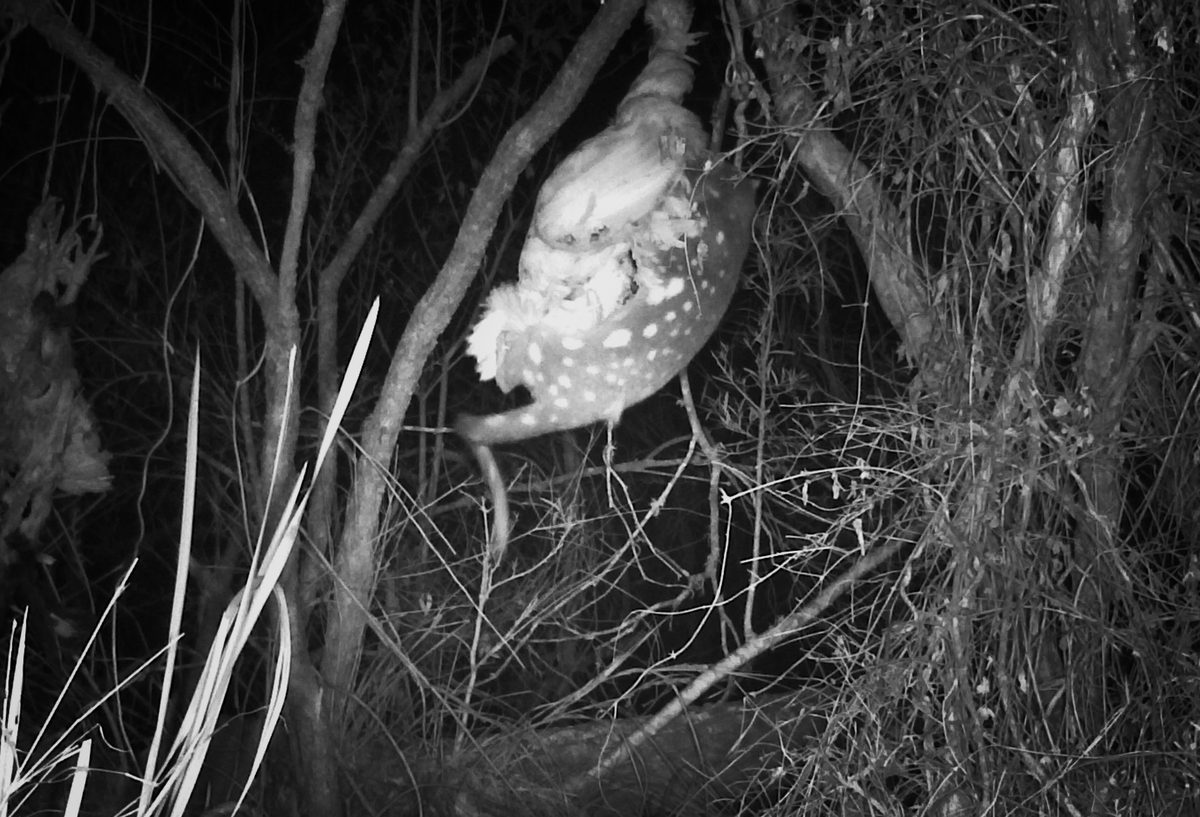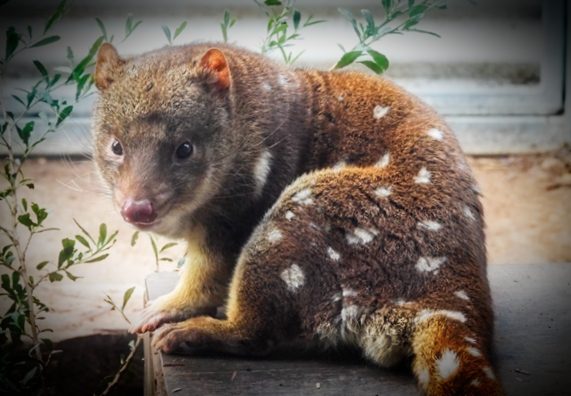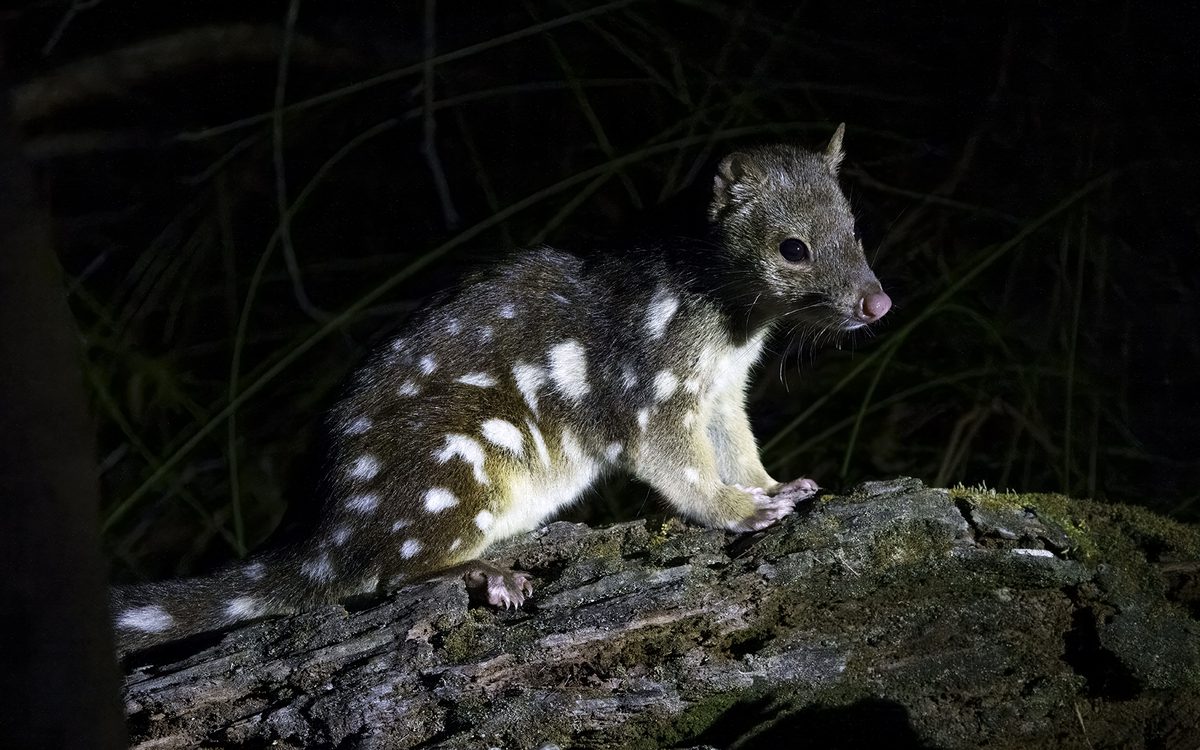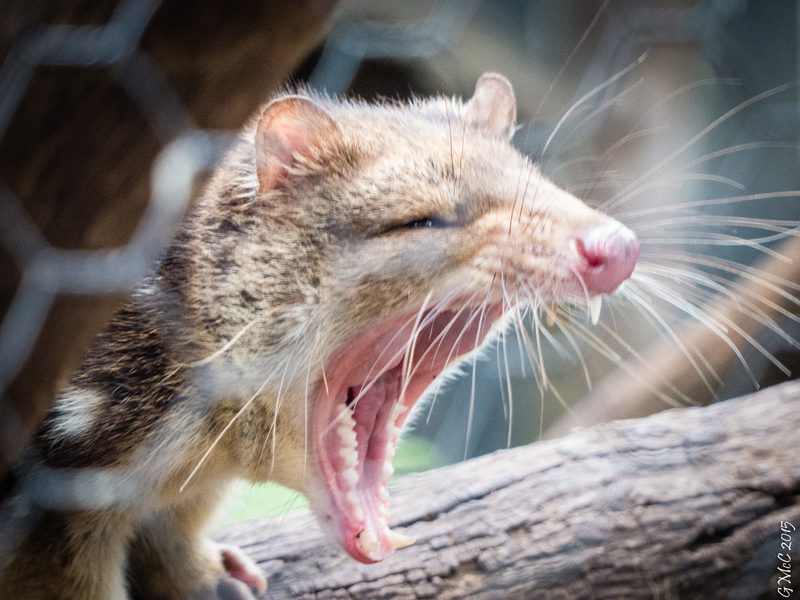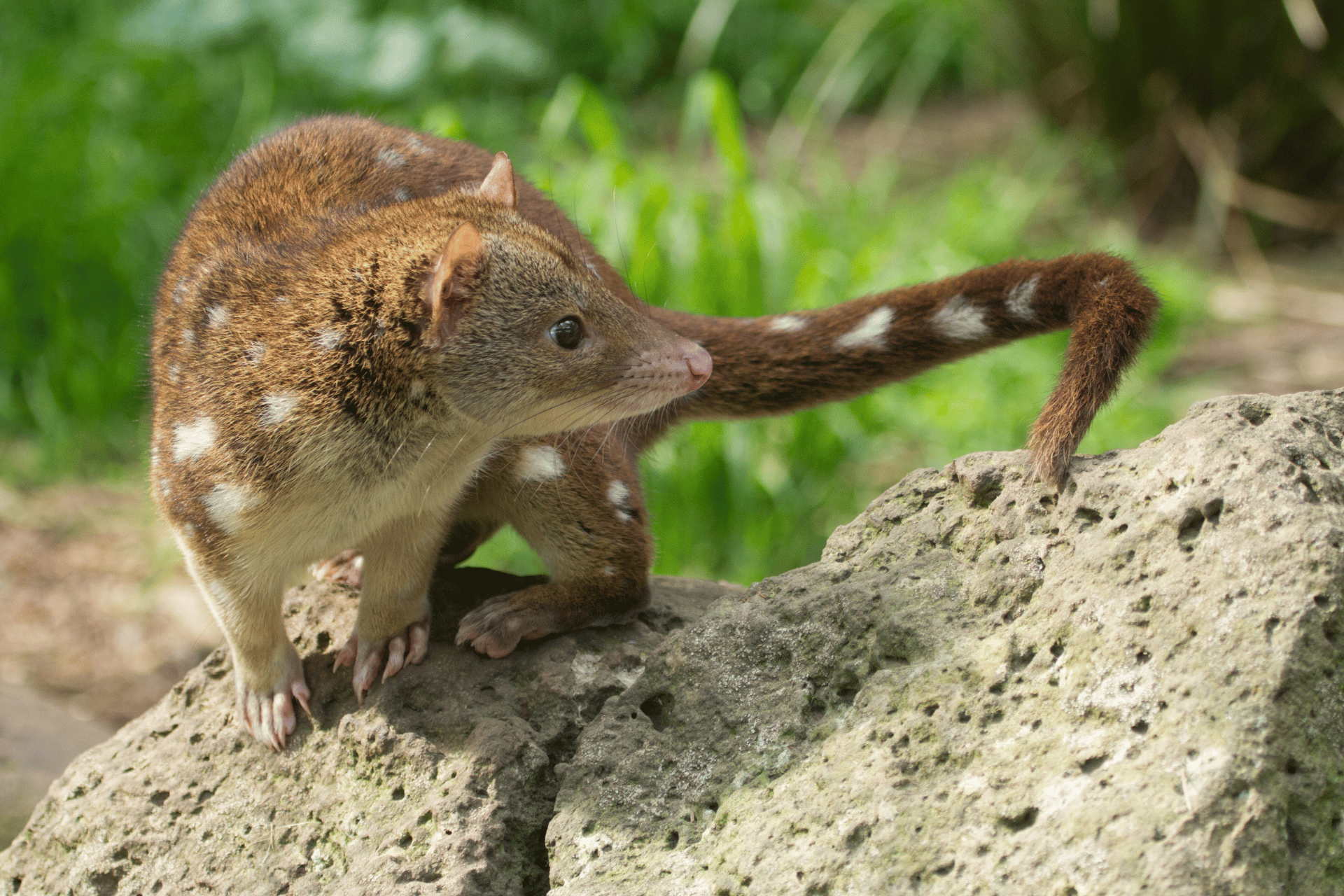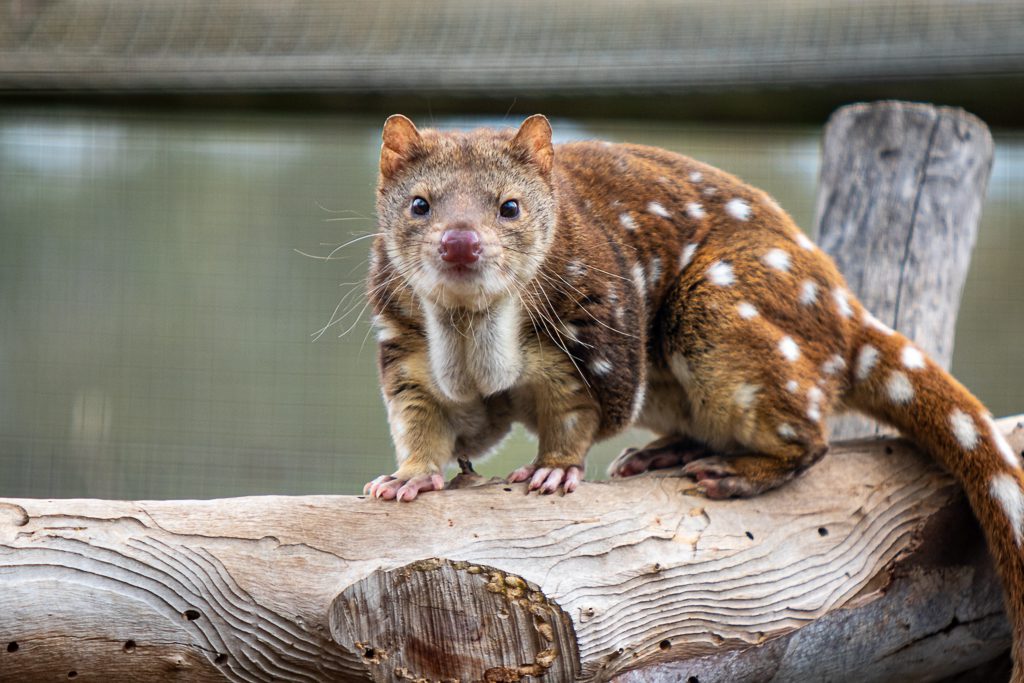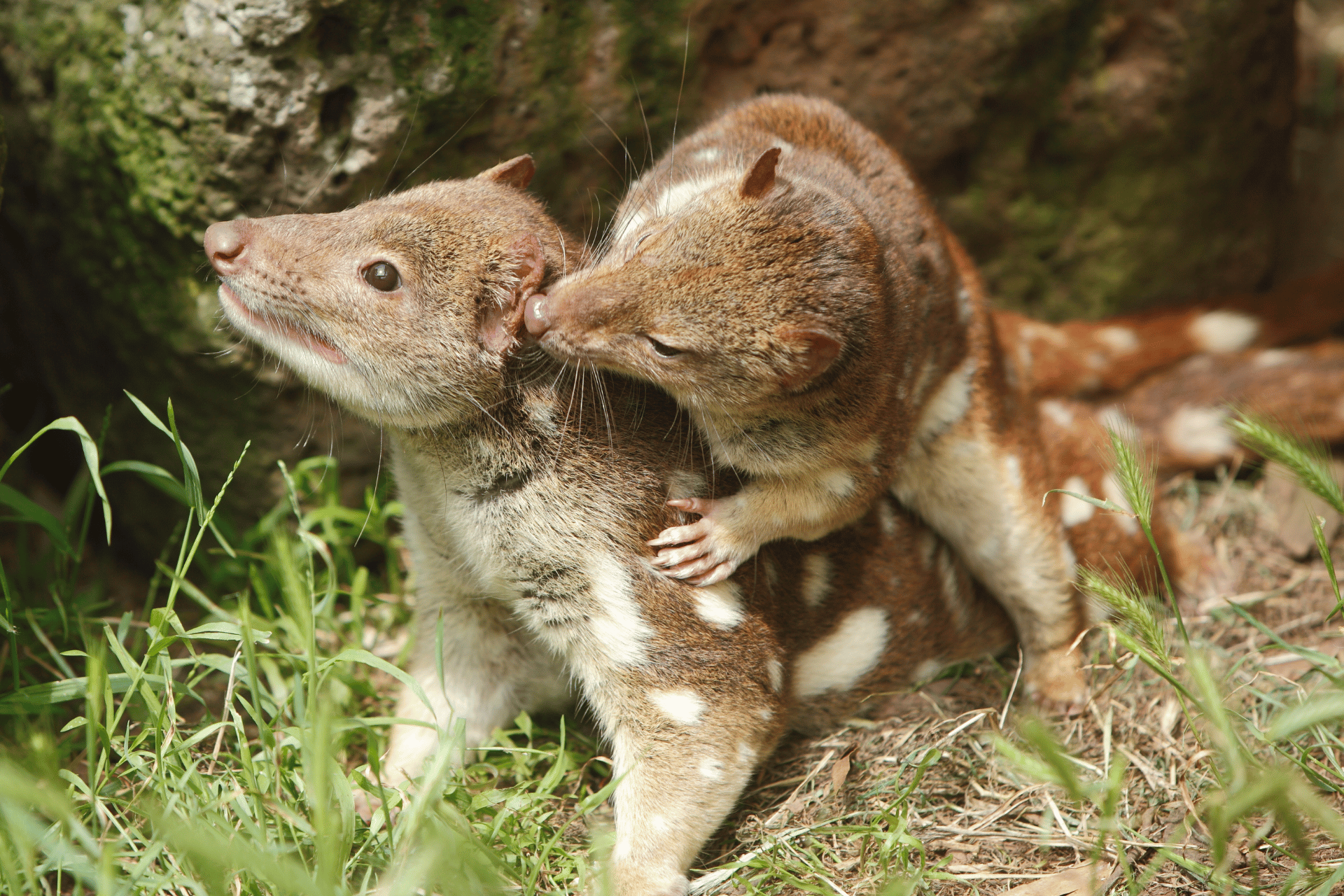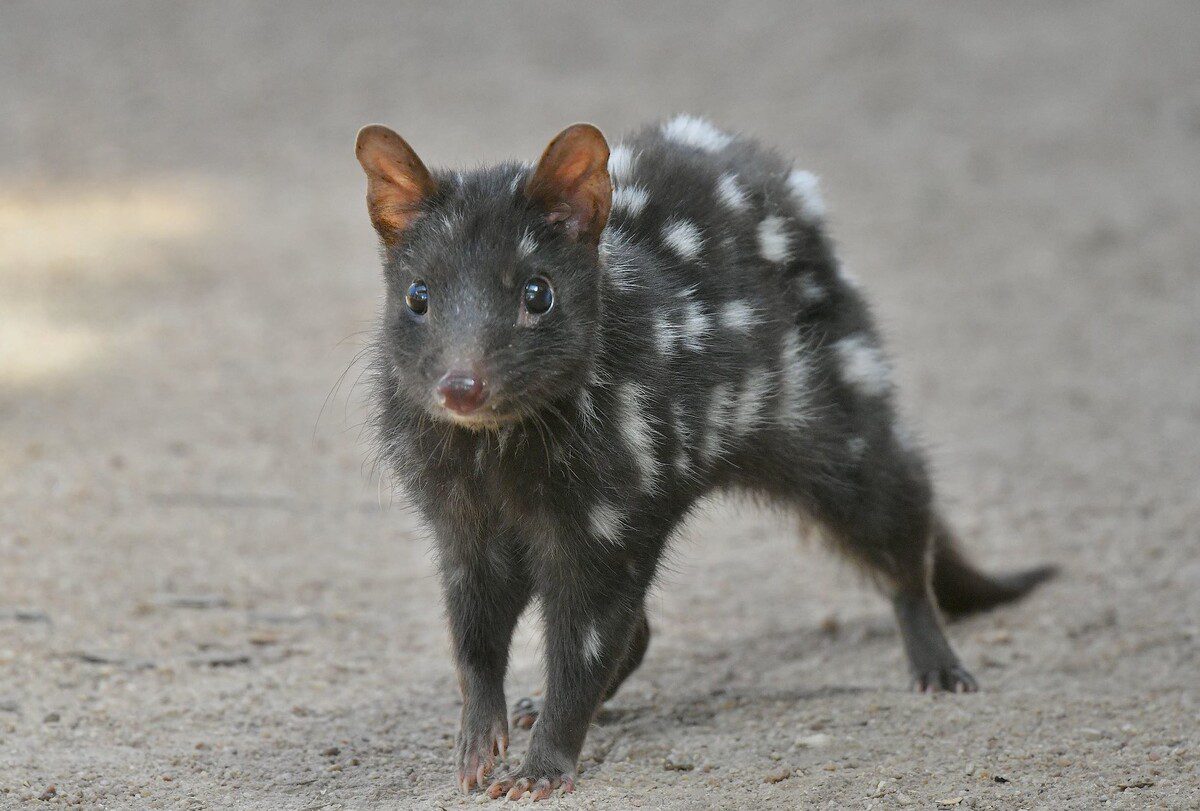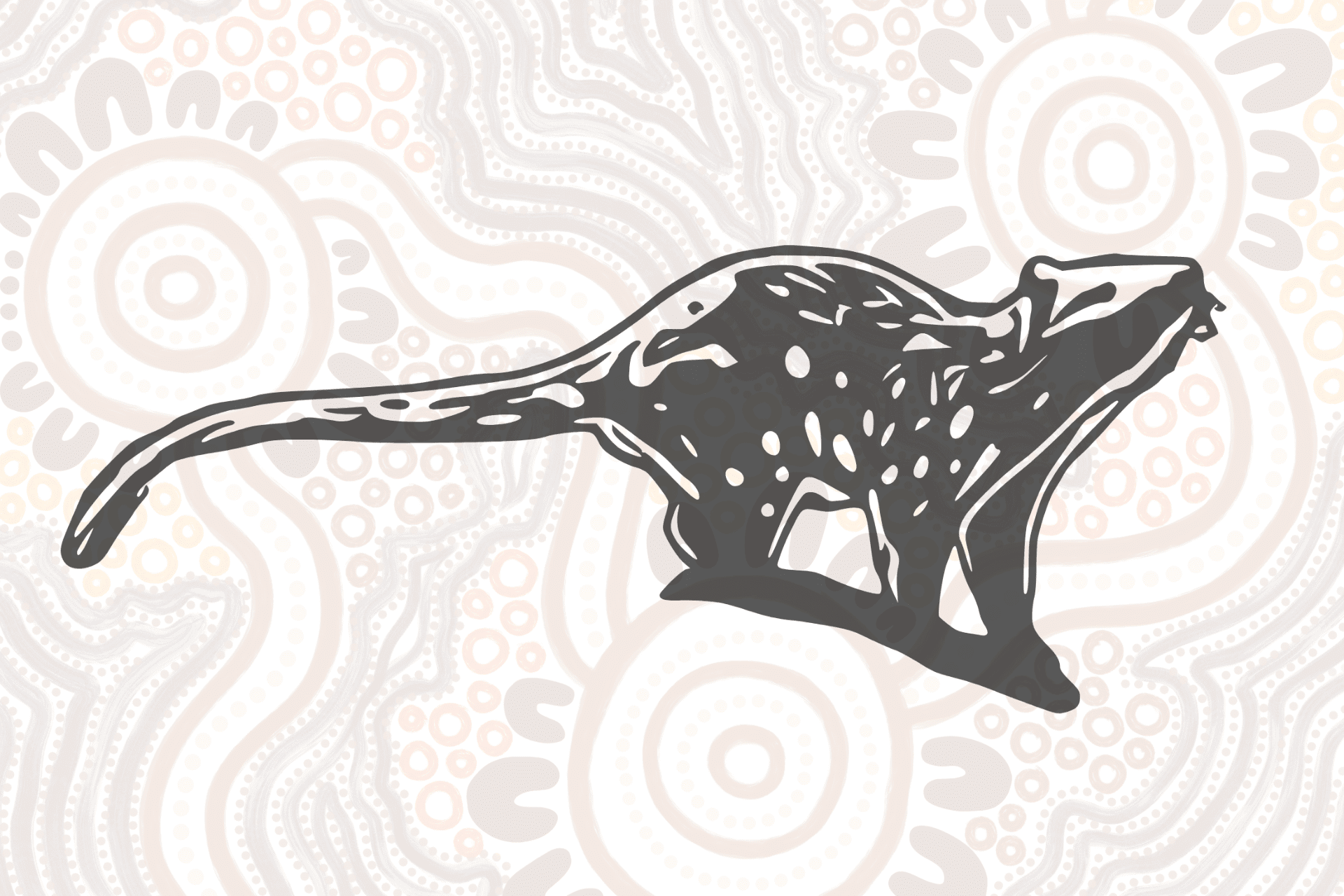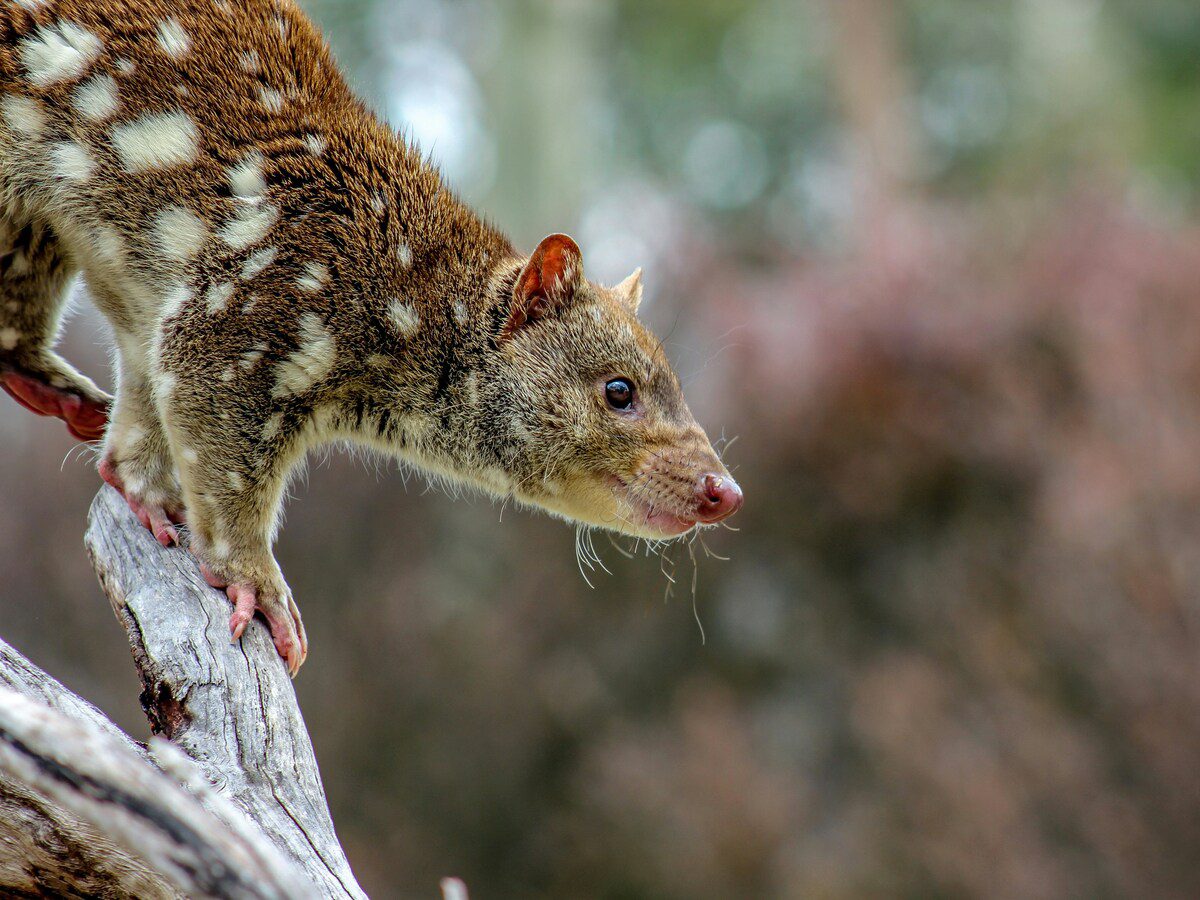About the Spot-tailed Quoll
Australia's last surviving tiger
The Spot-tailed Quoll, Dasyurus maculatus maculatus, is a culturally significant semi-arboreal, generally solitary and forest-dependent carnivorous marsupial. Caught in the headlights on a quiet bush road at night, it might look like a pet cat, but is mainland Australia's largest apex predator.
Habitat
Spot-tailed Quolls prefer habitats with ample vegetation cover, including forests, woodlands, and coastal heathlands, but their preference is mature, wet forests untouched by logging or fire. They often shelter in tree hollows, rock crevices and dens dug into the ground. These secluded spots provide them with protection from predators and harsh weather conditions.
Home Range
Each quoll establishes a home range, which is the area they roam during their lifetime. Male quolls typically have larger home ranges compared to females. These home ranges serve as their territory for hunting, breeding and other activities, e.g. just lazing about and enjoying themselves.
Female quolls are more likely to remain within a smaller area, maintaining a close proximity to ample resources, particularly during breeding season. Female quolls are more likely to remain within a smaller area, maintaining a close proximity to ample resources, particularly during breeding season.
Life Expectancy
The average lifespan of a Spot-Tailed Quoll is around three years in the wild. However, some individuals may live longer under favourable conditions.
Diet
Spot-tailed Quolls are carnivorous predators with a diverse diet. Their primary food sources include:
- Ringtail Possums
- Common and Mountain Brushtail Possums
- Greater Gliders
- Rabbits
Spot-tailed Quolls are opportunistic feeders and may also consume a variety of other prey items, like insects, lizards, crayfish, poultry, birds, small mammals, frogs, fish, and even plant material. They are also known to scavenge on caracasses and the waste left behind by humans.
Threats
Since Europeans arrived, Spot-tailed Quolls have declined by 50% and they are currently listed as Vulnerable under the Environment Protection and Biodiversity Conservation Act 1999 and Endangered under Victoria's Flora and Fauna Guarantee Act 1988 The upper Snowy River is the remaining stronghold in Victoria (Long & Nelson, 2010a).
Threats include:
- Competition and predation from introduced carnivores
- Habitat loss, modification and fragmentation
- Reduced genetic diversity
- Bushfire and inappropriate fire regimes
- Climate change shifting the landscape range they call home
- Road mortality
- Direct killing
What are they doing for our ecosystems?
As a top predator, the quoll may provide additional benefits to the habitat as an ecosystem engineer. Examples of benefits may include creating competition for feral cats to help reduce population growth (Fielding et al., 2022). This project aims to take the first steps in recovering the species in East Gippsland in order to investigate these ecosystem interactions and potential benefits.
